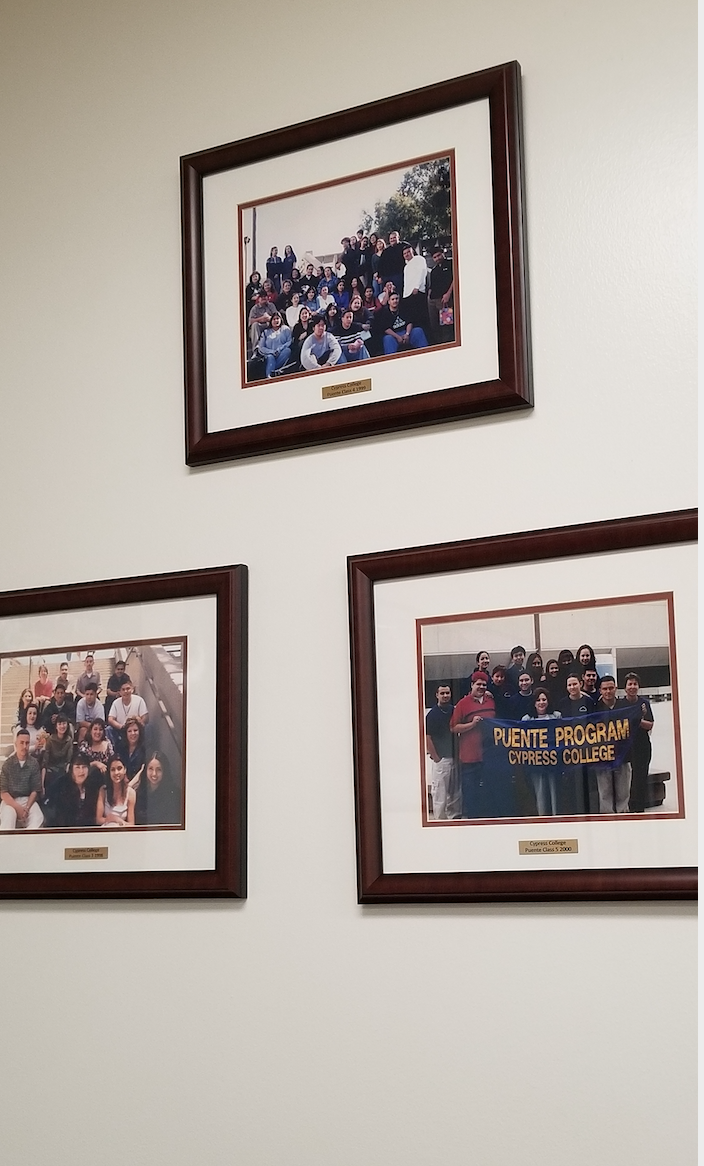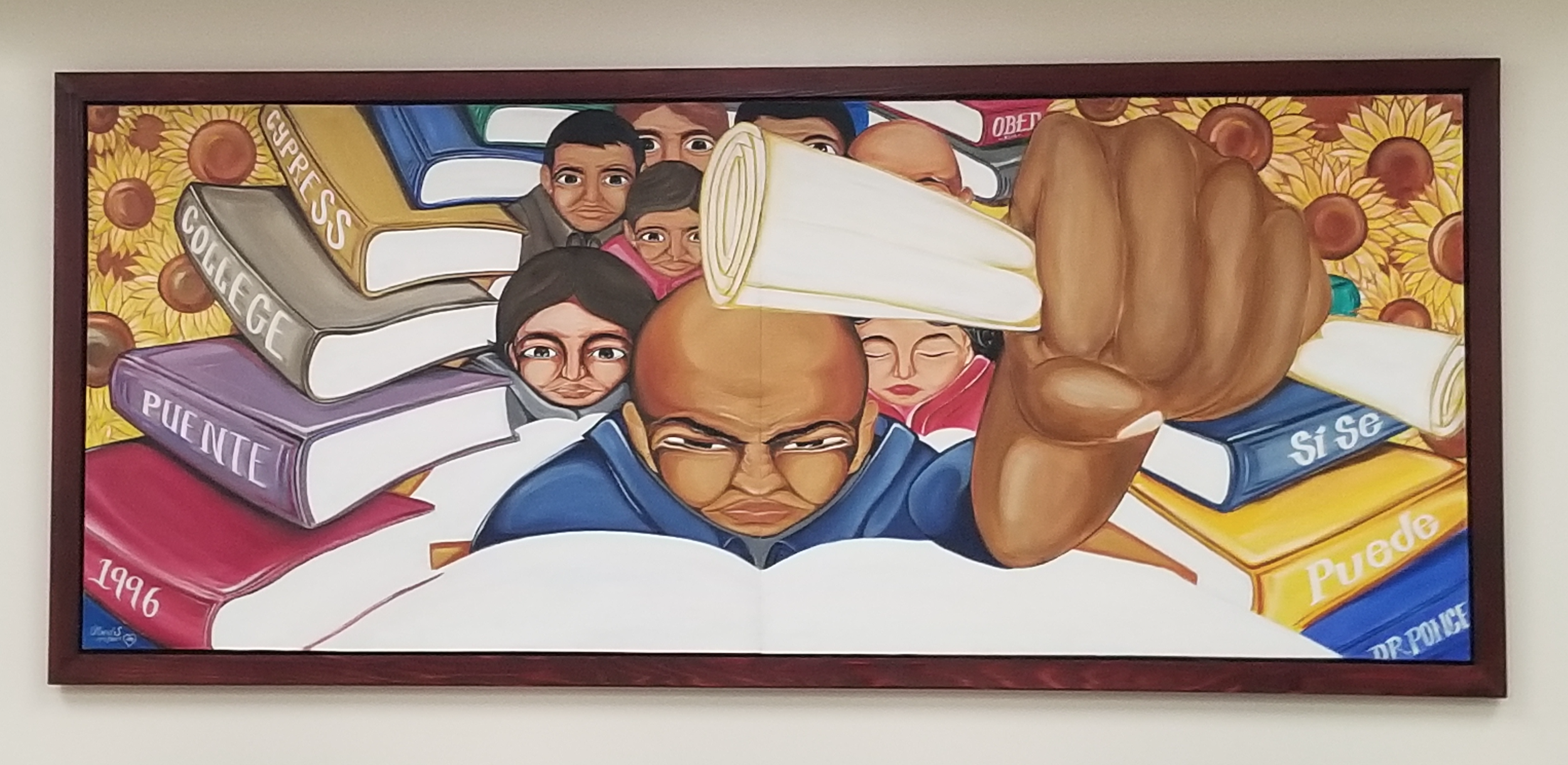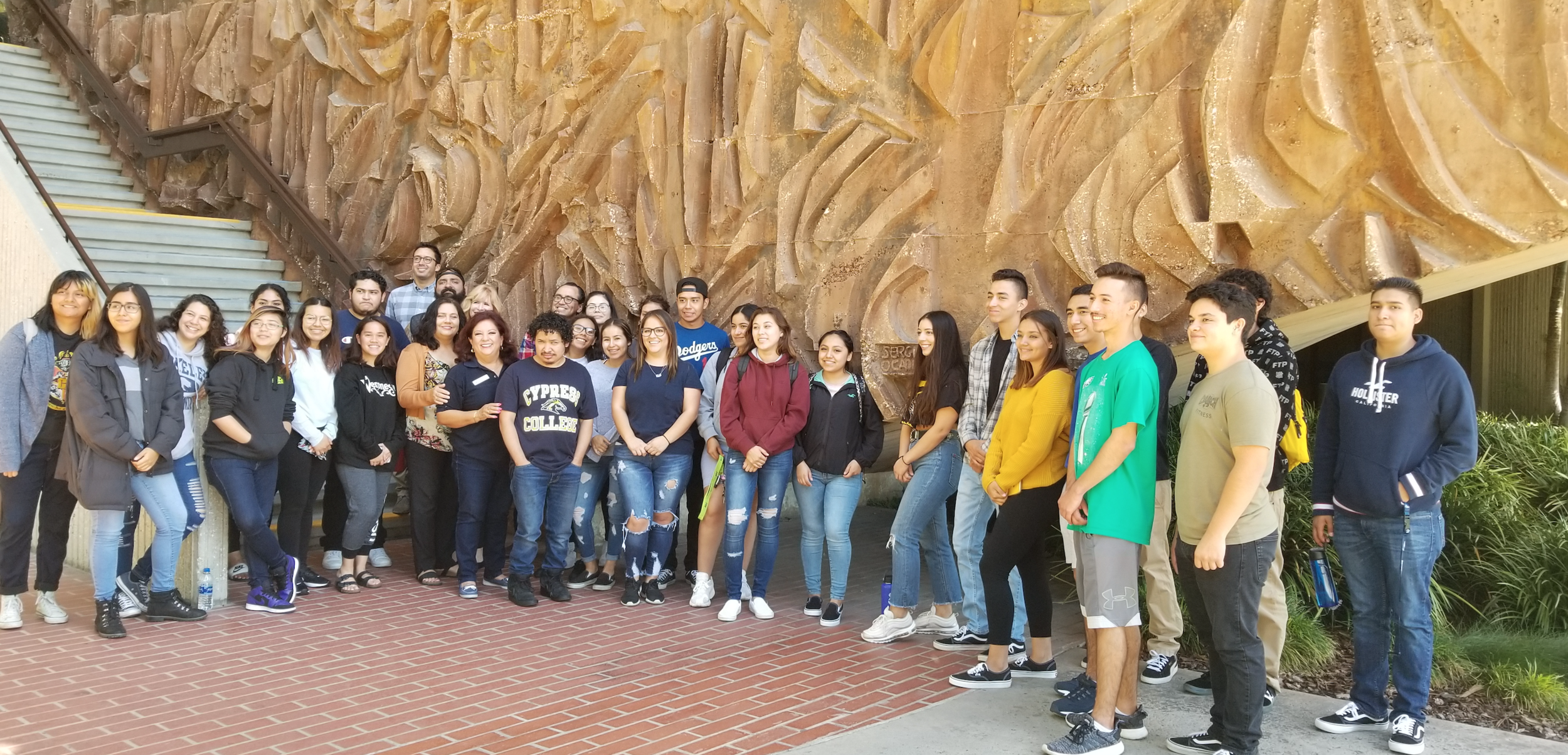PUENTE Class of 1996, with Dr, Mosqueda-Ponce seated front row, second from left.
The collection is currently housed in the Cypress College Puente classroom
Photographs of Cypress College’s Puente cohorts, 1998-2000
The Cypress College newspaper with front-page article about a 24-hour candlelight vigil, May3–May 4, 1995, held on the second level of the Humanities building “in honor of the continual support of the implementation of the Puente Program.”
The Puente Mural, which was unveiled for the Puente Program’s 21st birthday at Cypress College.
Puentistas gather in front of Sergio O’Cadiz Moctezuma’s iconic concrete mural at Cypress College, 2019
Puente at the Beach, #1.
Puente at the Beach, #1.
Cypress Puente Students visiting Homeboy Industries and the Homegirl Cafe in Los Angeles, 2019.
Cypress Puentistas visiting Chicano Park in Logan Heights, San Diego's oldest Latinx neighborhood and home to the world’s largest concentration of Chicano Murals, with Puente’s English instructor, Ashton Politanoff, right.
Puente Class Photographs
Dr. Therese Mosqueda-Ponce
Humanities
Dr. Therese Mosqueda-Ponce has a photograph of every PUENTE cohort that Cypress College has ever had. That’s twenty-five class pictures. The fashions and hairstyles have changed through the years, but the smiles have stayed the same: proud, sometimes a little nervous, but always radiating a sense that “we did it.”
Sentimentality is not the driving force behind “Dr. P’s” collecting habit, however. As she explains: “I was prompted to start this collection because I knew our Program made HISTORY at Cypress College because everyone was so against us at the beginning.”
PUENTE was born in California in 1981, when educators combined counseling and mentoring with English classes in an effort to increase retention, graduation, and transfer for Latinx students. PUENTE’s impact was such that 19-California community colleges had adopted it by 1989, and in 1992 North Orange Community College District offered it for the first time at Fullerton, sister school to Cypress College.
There was resistance to Puente at Cypress however. As Therese explains, in the early 1990s opposition to the PUENTE Program was such that the English Department refused to provide an English instructor – an essential component for the PUENTE model – while some instructors signed a petition stating that they would not teach in a PUENTE program. [1]
For more than three-years, pro-PUENTE students at Cypress attended Board of Trustees meetings, held vigils, and lobbied faculty and administrators to implement PUENTE at Cypress. Their actions were led by the Movimiento Estudiantil Chicanx De Aztlán (MEChA) and supported by Cypress employees, who formed the NOCCCD Latino Faculty and Staff Association. Such was the polarization, however, that it was not until Dr. Christine Johnson became the 8th President of Cypress College, and its first African American and first female president, that a new English instructor was hired and the impasse was broken.
As described by Dr. Mosqueda-Ponce, who has been Puente’s counselor since the program began at Cypress in 1996 , the core anti-PUENTE arguments were that “Latino students felt insulted” by the program, which would both “exclude…non-Latino students,” and “attract more Latinos to the campus.”[2]
The first two of these fears proved to be baseless. The PUENTE program is open to students of all ethnicities, while applicant numbers – 96 applicants for the first 30-seat PUENTE cohort – suggest that students felt more empowered than insulted by the Program. Fear number three, however, did indeed come to pass; happily for Cypress College. For while Latinx people made up 7% of Cypress students in the pre-PUENTE mid-1990s, by 2018, they comprised 48.5% of the student body.
When asked which of the photographs in the collection is her favorite, Therese responded: “All of them are my favorites, but I think the first two classes, because this was going to make us a hit or a flop. Thank God we are a HIT!! Class 10 was when we started our road trips, class 15 was the class we had our Quinceanera…[a] big celebration with Aztec Dancers…, class 21 was when our mural was inducted in the Puente classroom, class 25 will be celebrating our 25th anniversary!”
“These pictures are desirable to me because it was through this program that I found my mission in life,” says Dr. Mosqueda-Ponce. As the program’s motto goes: “once a Puentista, always a Puentista.”
Many happy returns PUENTE!
NOTES
[1] Therese Mosqueda-Ponce, Ph.D., The History of The PUENTE Program at Cypress College
[2] Ibid.















